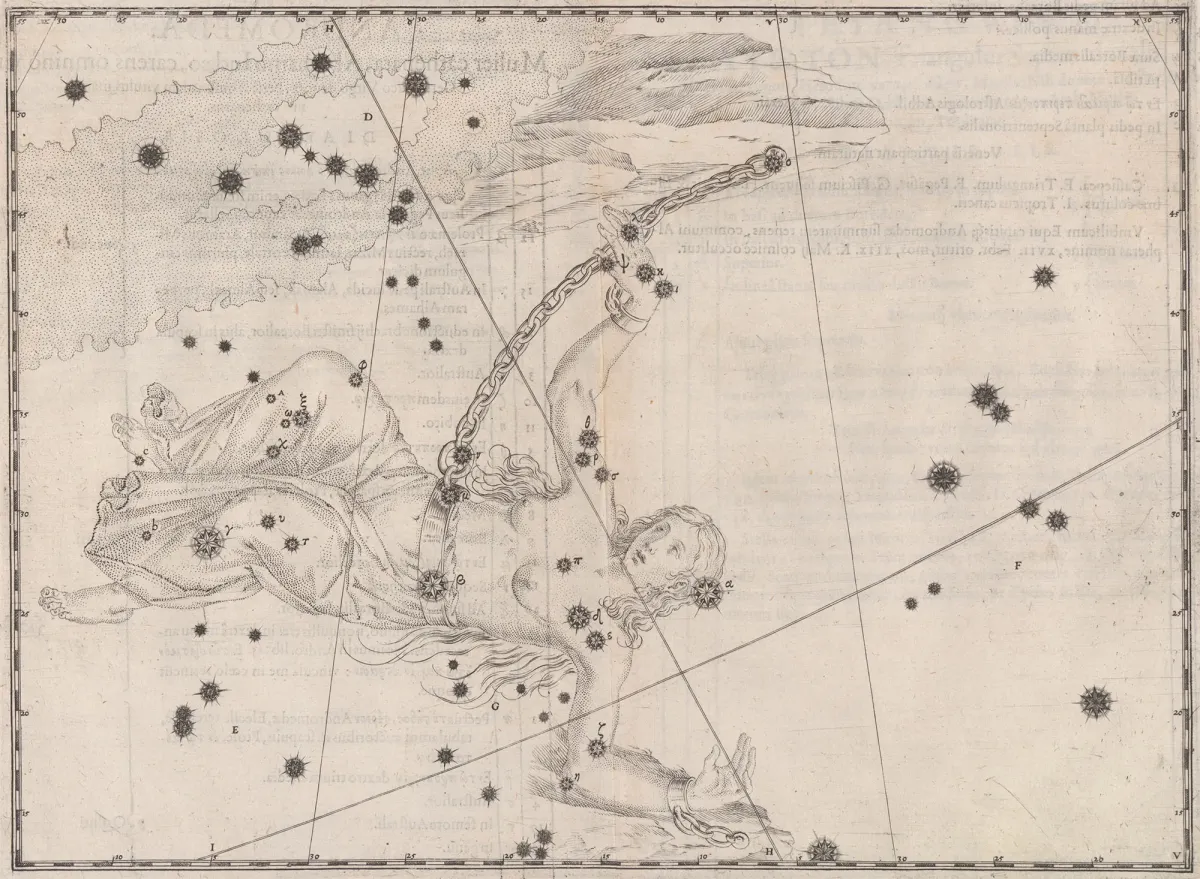Constellation Andromeda (Chained Maiden)

Properties
The constellation Andromeda shares a common star with Pegasus: α Andromedae (Alpheratz, also Sirrah) is also the star in the northeast corner of the well-known large rectangle of Pegasus. In older atlases one can still find the designation δ Pegasi for the same star. In the meantime, however, it has been agreed that Alpheratz will officially be included in the Andromeda constellation. [20]
The main part of Andromeda extends east from Pegasus so it follows it due to the movement of the sky. Immediately afterwards it is followed by the constellation Perseus, which connects to the east of Andromeda. Andromeda is very close to Cassiopeia, to the north of it.Andromeda is separated from Cepheus by Lacerta. On clear, dark nights, the Andromeda Galaxy can be observed with the naked eye. The constellation Andromeda covers an area of 722 square degrees. The centre culminates at midnight on around September 30th. [9, 15]
| α And | Alpheratz, Alpherat, Sirrah, Sirah |
| β And | Mirach, Merach, Mirac, Mirak, (Al Mizar) |
| γ1 And | Almaak, Almach, Alamak, Almak, Almaach |
| ξ And | Adhil |
| IAU Name | Andromeda |
| IAU Genitive | Andromedae |
| IAU Abbr. | And |
| English Name | Chained Maiden |
| Culmination at local midnight | 6 October |
| Season (Latitude +0.0°) | June … March |
| Right Ascension (J2000.0) | 22h 57m 22s … 02h 39m 33s |
| Declination (J2000.0) | +21° 40' 36" … +53° 11' 13" |
| Area | 722 deg2 |
| Neighbours (N↻) | Cas, Lac, Peg, Psc, Tri, Per |
Deep-Sky Object Descriptions
G 1
Messier 31
NGC 70
NGC 80
NGC 404
NGC 891
NGC 7662
QSO J014709+463037
UGC 1810/3
Catalogues
Mythology and History
Andromeda was the daughter of the Ethiopian king Cepheus and his wife Cassiopeia. When Cassiopeia boasted that hers and her daughter's beauty was greater than that of the nymphs in the sea, Poseidon, god of the oceans, sent the mighty whale Cetus to destroy the Ethiopian coast. The only way to appease the monster was to sacrifice the lovely daughter Andromeda to him. After her parents fought desperately, they eventually chained her to a rock by the sea.

Fortunately, just at that moment, the great hero Perseus came along. He fell in love with the beautiful Andromeda, who was almost naked, adorned only with a few jewels and chained to the rock. Perseus requested both Andromeda's hand in marriage from King Cepheus and a kingdom of his own as a reward for rescuing her. Fearing for his daughter's life, he agreed. Perseus then put on his winged shoes and hurried through the air towards the sea monster. All his actions were intended to capture the attention of the girl. Therefore, he carried out the liberation as noisily and sensationally as possible, armed only with the scimitar in his muscular arm. He could also have defeated the monster with the severed head of the Gorgon Medusa, which he carried with him, but that did not seem appropriate to the situation. [20] However, a more common variant suggests that he used the head of Medusa to petrify the sea monster. [66]
Perseus and Andromeda married and happily lived a long life. It is said that the gods were so satisfied that they gave the main characters of this drama a place among the stars.
In 1627 the Catholic Church tried unsuccessfully to Christianize the «heretical constellations», which had been known for centuries, even millennia, and to transform them into figures from the Christian world of faith. The constellation of Andromeda became «Sepulchrum Christi» (tomb of Christ). [20, 84]